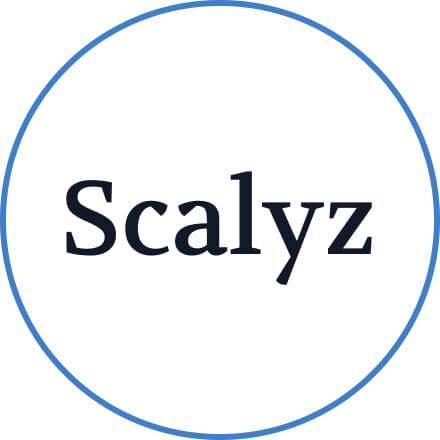IT recruitment is evolving rapidly, but few areas remain as ambiguous as DevOps. Behind this now-essential term lies a wide variety of roles, responsibilities, and technical skills that even seasoned recruiters sometimes struggle to grasp. This complexity often results in vague job postings, misaligned interviews, and hiring processes that fail to identify the right candidates. This article offers a clear and structured guide to help you better understand DevOps roles, assess candidates accurately, and improve the efficiency of your recruitment process.
Table of Contents
1. Why Encouraging Candidate Questions Matters
2. Key Moments to Invite Dialogue
3. How to Structure a Productive Conversation
4. The Impact on the Candidate Experience
Conclusion : Recruiting Also Means Listening
1. Why Encouraging Candidate Questions Matters
When a candidate asks questions, it’s not a waste of time, quite the opposite. It’s a sign of genuine interest and motivation. It shows a real desire to understand the role, the work environment, and the expectations. Encouraging this kind of exchange helps build a climate of trust, where the company demonstrates transparency and openness to dialogue.
It’s also a valuable opportunity to better understand the candidate’s priorities, whether it’s work-life balance, preferred tools, or team organization. By providing clear answers, you reduce the risk of misunderstandings and misaligned hires. The result is fewer early departures, smoother onboarding, and stronger, more lasting professional relationships.
2. Key Moments to Invite Dialogue
The invitation to ask questions shouldn’t come only at the end of the interview. There are several key moments when you can open the door to conversation:
- Before the interview:
In your invitation email, include a clear sentence encouraging the candidate to prepare questions in advance. This shows that you value open dialogue and that the interview won’t be one-sided. You can even suggest a few areas they might want to explore, such as the team, tools, or project scope. - During the interview:
Make sure to dedicate real time for the candidate’s questions, ideally in the middle or toward the end of the conversation, but not just in the final moments. Avoid vague phrases like “Do you have any questions?” and instead use more inviting language such as, “What aspects of the role or team would you like to learn more about?” - After the interview:
Send a thank-you message that goes beyond the usual “we’ll get back to you.” Take the opportunity to remind the candidate that they’re welcome to reach out if they have any follow-up questions. This kind of follow-up reassures candidates and strengthens your image as a professional and accessible company.
Suggested sentence to include in your emails or interviews:
“Feel free to ask us any questions that might help you better imagine yourself in the role or in our work environment.”
3. How to Structure a Productive Conversation
To make the exchange with the candidate truly meaningful and conducive to trust, it’s important to go beyond simply encouraging questions. The first step is to identify the types of questions you would like to see emerge. For instance, prompts like “What should I know about the team I’ll be working with?”, “What are the concrete expectations for the first three months?”, or “What does the onboarding process usually look like?” can serve as helpful examples. Candidates don’t always feel confident enough to ask such questions spontaneously, so suggesting them subtly in advance or during the interview can encourage more open dialogue.
In addition, recruiters must be trained to respond clearly, honestly, and concretely, avoiding unnecessary technical jargon or vague promises. A transparent answer to a genuine question can significantly shift the candidate’s perception, strengthen their interest, and reduce uncertainty. This requires solid internal preparation and a shared understanding of the role’s realities and team culture.
Lastly, to set this tone early in the candidate journey, you might include a mini FAQ on your careers page or directly within your job postings. This section can address frequently asked topics such as remote work, tools used, project organization, or team values. This simple addition helps initiate the conversation, reassures more cautious candidates, and demonstrates your commitment to two-way communication from the very beginning. Ultimately, this approach attracts candidates who are more engaged and better aligned with your work environment.
4. The Impact on the Candidate Experience
A candidate who truly feels heard is much more likely to engage actively in the recruitment process, as they sense a genuine willingness for dialogue and real attention to their concerns. This reciprocal stance has a direct and positive impact on the fluidity of hiring: dropouts during the process are significantly reduced because candidates find it easier to envision themselves in an environment where their questions receive clear answers. Moreover, this active listening fosters better mutual understanding between both parties, helping to establish stronger professional relationships and leading to more sustainable hires. Finally, a company that makes space for the candidate's voice sends a strong message: one of a transparent, human employer brand that aligns with the expectations of today’s talent, naturally boosting its appeal in a competitive market.
Conclusion : Recruiting Also Means Listening
Creating space for candidate questions doesn’t unnecessarily extend the recruitment process. It actually makes it more human, more effective, and often faster. An informed candidate is a better-prepared, more engaged one. It’s up to you to foster the conditions for authentic dialogue, because the best hires always begin with meaningful conversations.
Partager cet article




